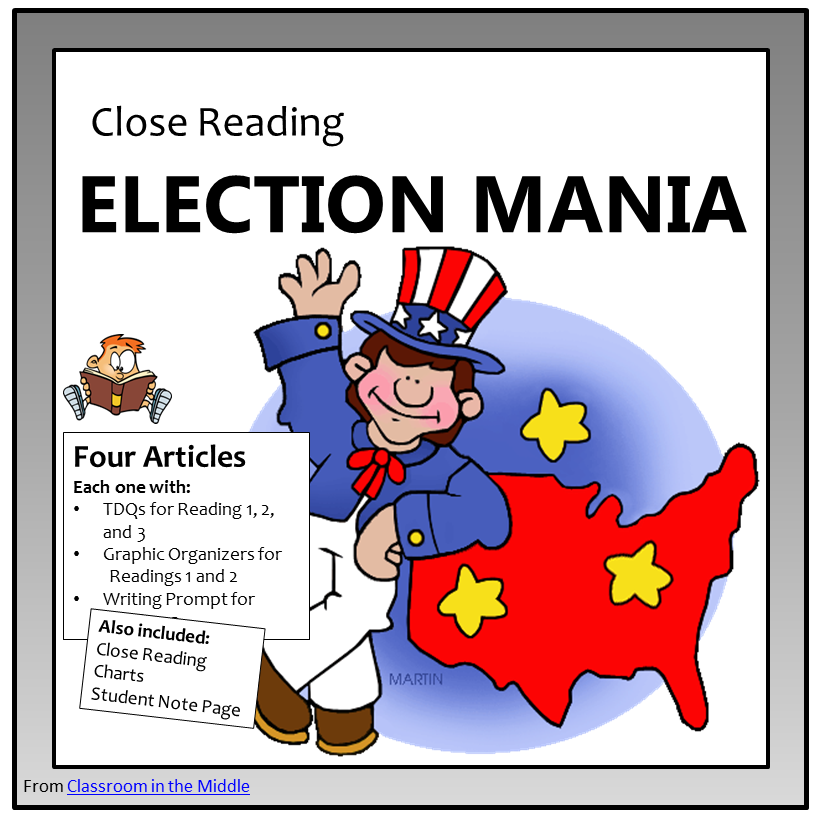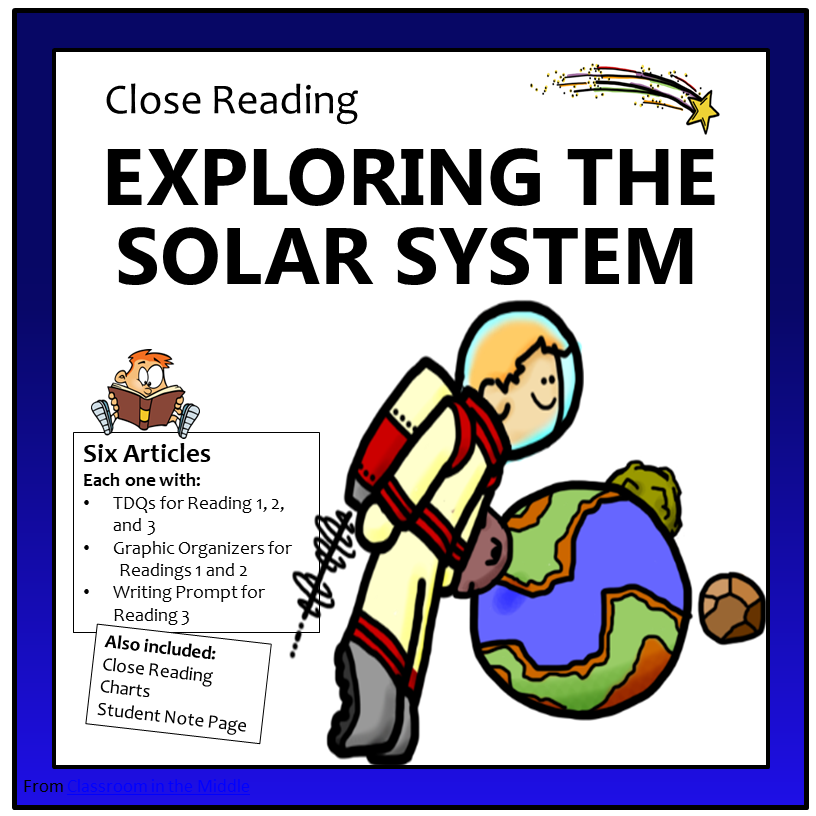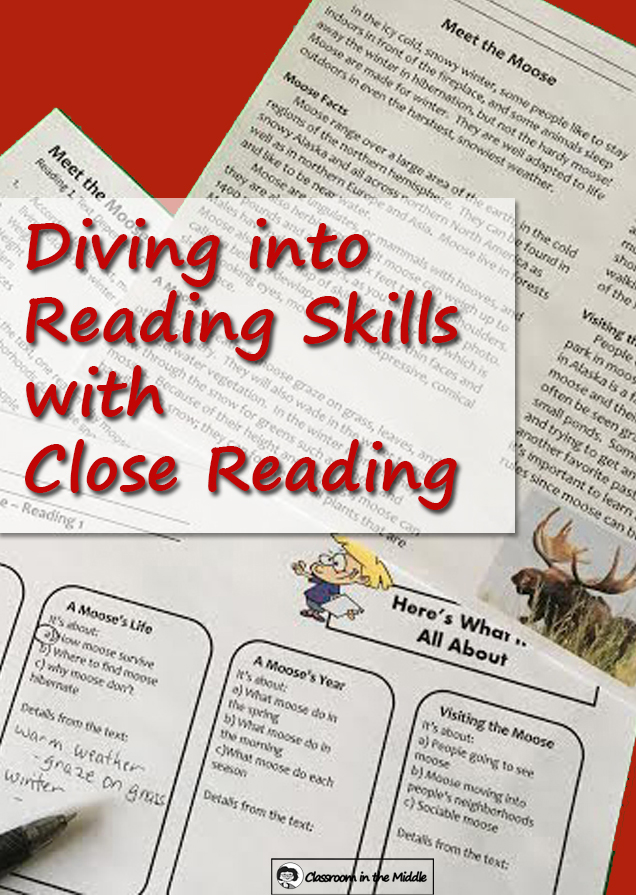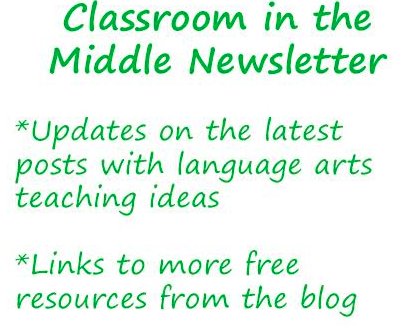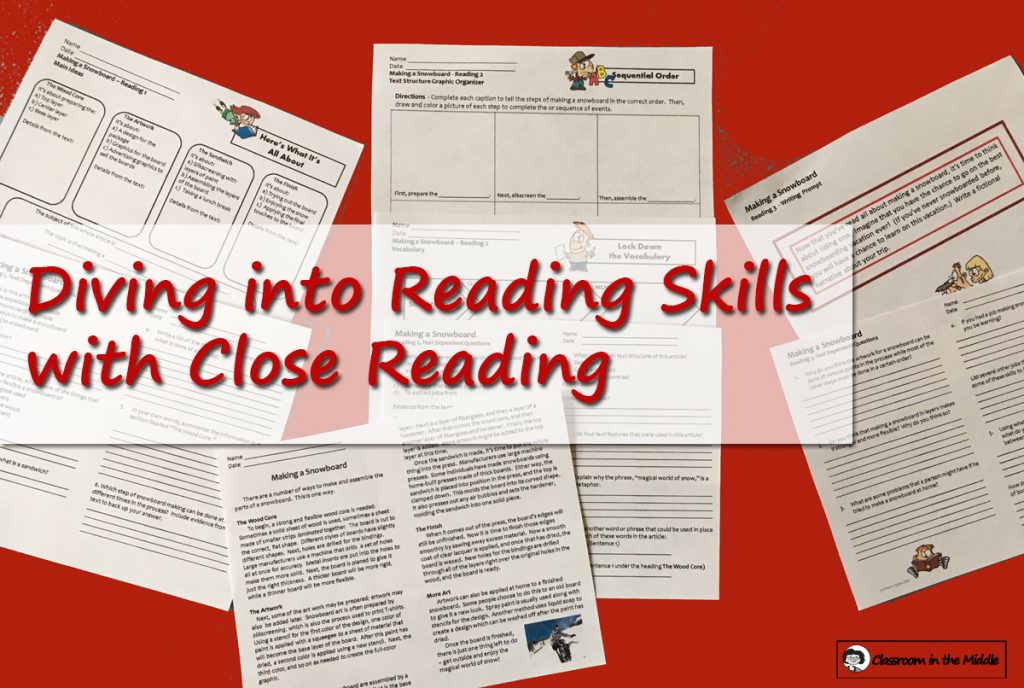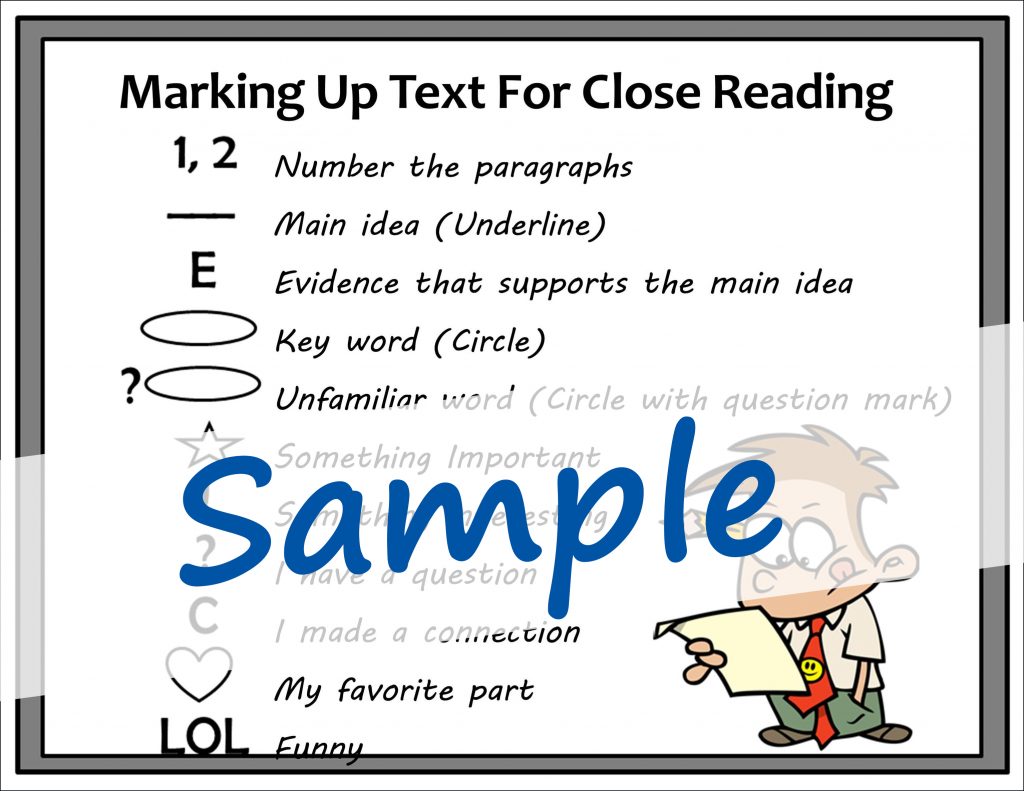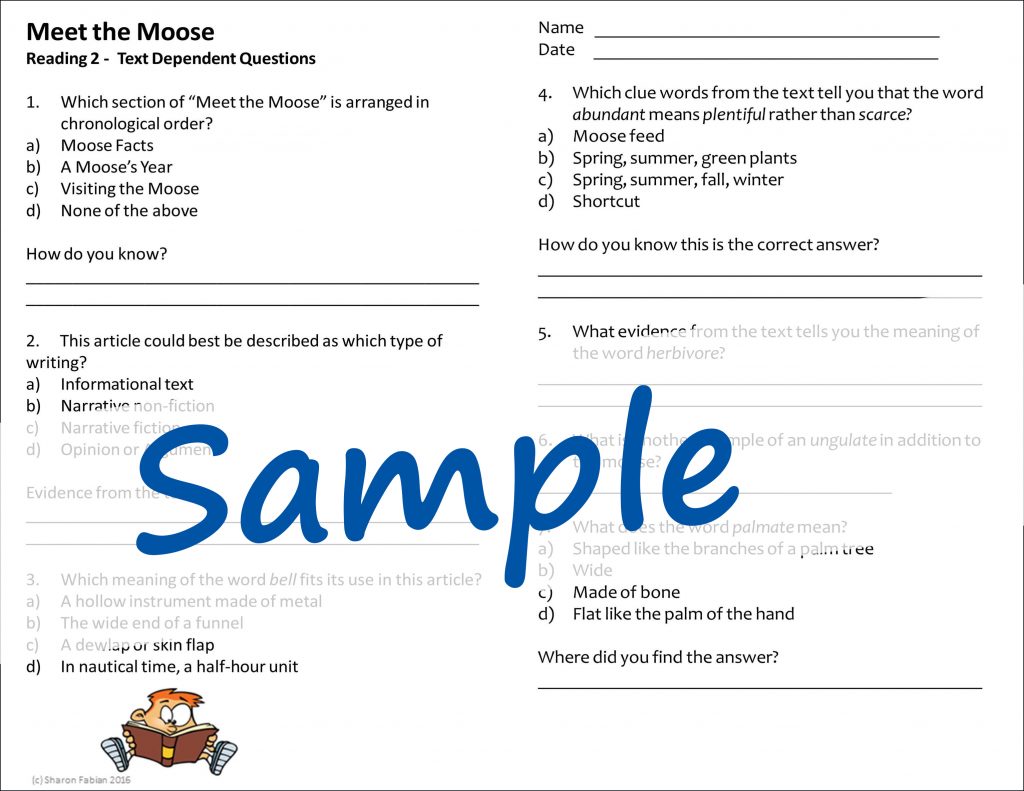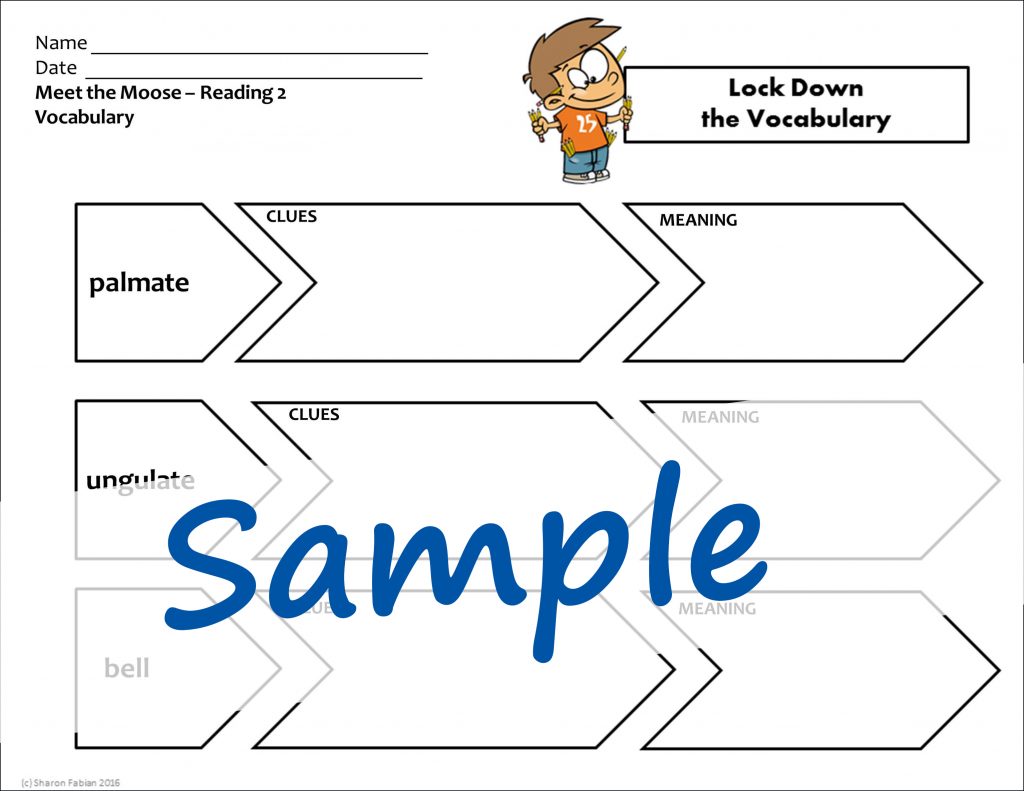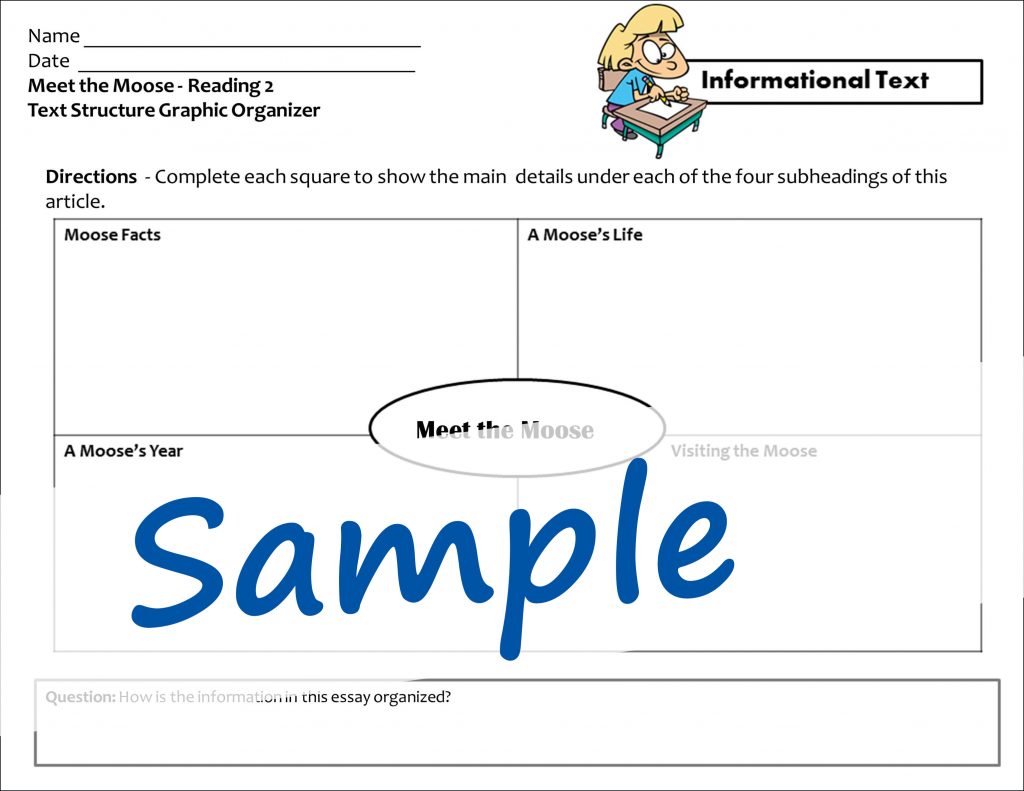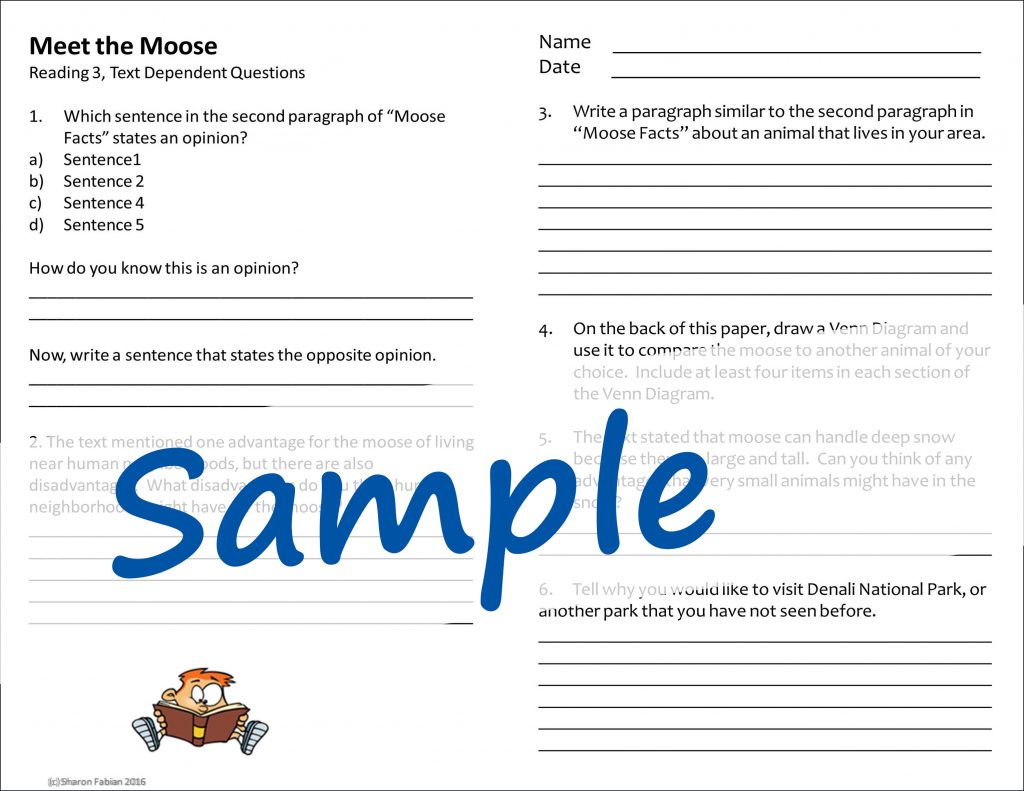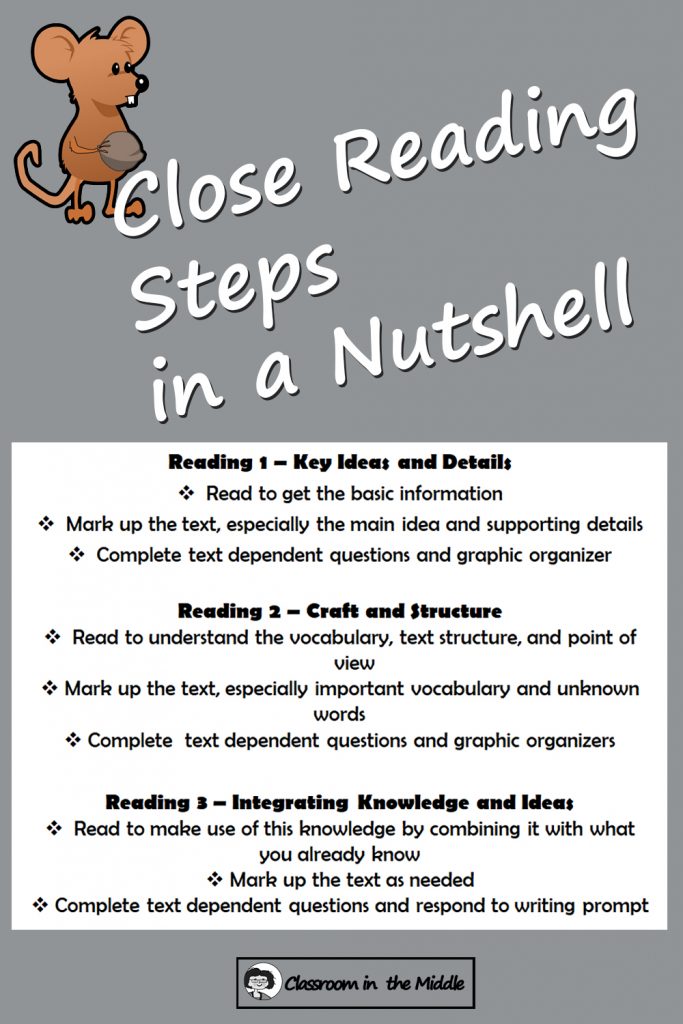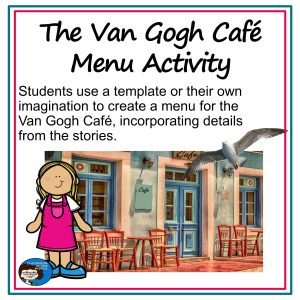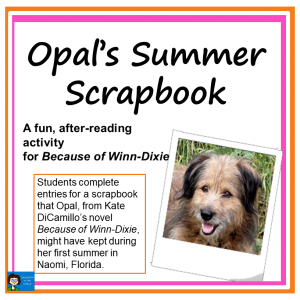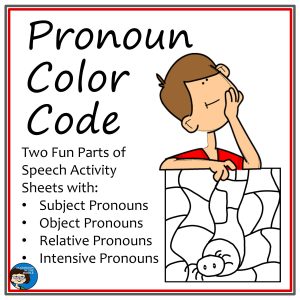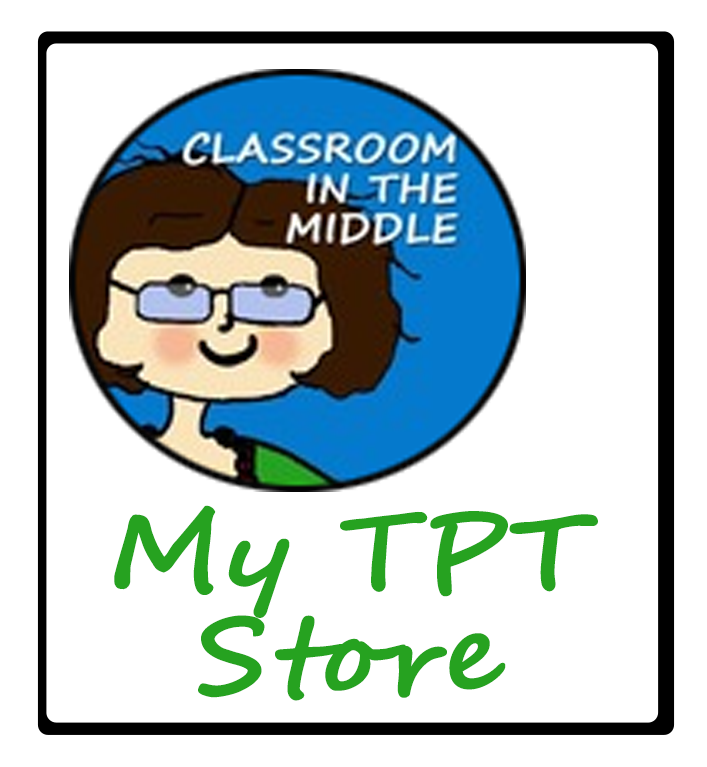Reading a novel in class and focusing on skills as they come up in the story is a common way of addressing reading comprehension, but sometimes you need to take a deeper dive and focus in a sustained way on comprehension skills using close reading lessons.
A close reading lesson is a great way to tackle a whole set of comprehension skills that will allow your students to get the most out of any article (or story) that they read! I’ll use one of the articles from my Close Reading – Wild Winter packet as an example. The article is called “Meet the Moose.”
The article itself is a one-pager. I settled on this length for most of my close reading activities – it seems long enough to accommodate all of the activities, but still short enough for kids to handle easily.
The full close reading lesson is in three parts. On the first day, students read the article, mark it up, and work on the main ideas and details. On the second day, students reread the article and work on skills including vocabulary and text structures. And on the third day, students do a final reading and then respond to the story, combining what they have just read with their own knowledge. So, as you already know, close reading is intensive reading work!
Marking up the story is a great starting point because it gets students interacting closely with the text and sets the stage for the activities that follow. Here you can see my mark-up chart.
For each of the three readings, I start with a few text-based questions. Some of the questions are factual – straight from the article. Others are inferential but still require students to refer to the text for their content. Some of the questions also ask the students to provide text-based evidence for their answers.
Here are my text-based (or text-dependent) questions for the first reading of “Meet the Moose.”
Also for the first reading, I like to use a graphic organizer about the main ideas and details, such as this one.
On day two, students reread the article focusing on important vocabulary terms and on features of the writing itself, such as the type of text structure used or the point of view. They can continue marking up the text as well, focusing on these new elements. Text-based questions for this second reading also focus on these same elements.
My first graphic organizer for day two is a vocabulary chart in which students define a few important words using clues from the text, and a second one sorts out the text structure.
The text-based questions for day three of “Meet the Moose” take reading comprehension one step further with questions based on facts and opinion, advantages and disadvantages, and making comparisons. Students use their own knowledge to expand on what they have just read.
The final activity, designed to extend this close reading lesson into writing, is an opinion essay which students develop with supporting reasons in response to the following writing prompt.
Altogether, it’s a lot of steps, but well worth the time and effort when you want your kids to boost their reading skills! Here are all of the steps “in a nutshell.”

Related Resources
